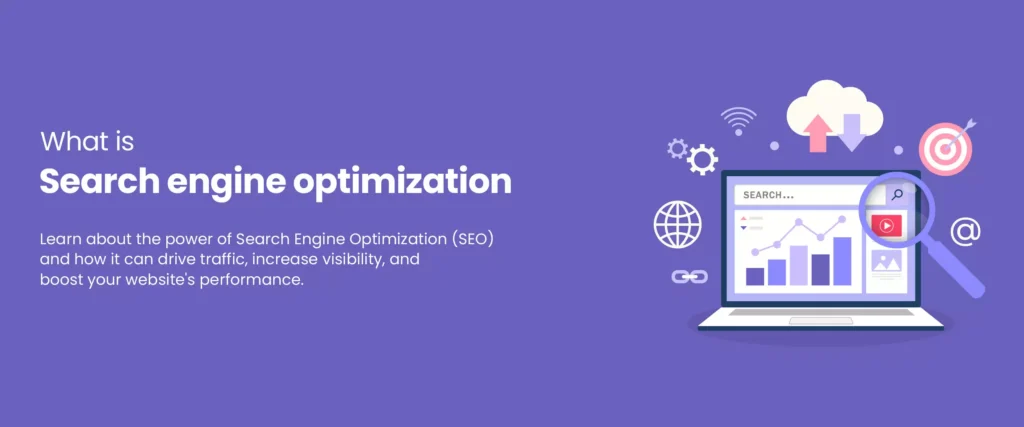
The Ultimate Guide to Search Engine Optimization (SEO) in 2024
In the ever-evolving landscape of digital marketing, Search Engine Optimization (SEO) remains a cornerstone of successful online strategies. As we navigate through 2024, understanding and leveraging the latest SEO practices is crucial for driving traffic, improving visibility, and achieving your business goals. This guide will walk you through the essential aspects of SEO, highlighting recent changes and strategies to help you stay ahead of the curve.
What is SEO?
SEO stands for Search Engine Optimization. It’s the practice of enhancing your website and content to rank higher in search engine results pages (SERPs). The ultimate aim is to increase organic traffic—visitors who find your site through search engines like Google, Bing, or Yahoo.
Key SEO Trends in 2024
1. AI and Machine Learning
Search engines are becoming increasingly sophisticated, thanks to advancements in AI and machine learning. Google’s algorithms, like BERT and MUM, are designed to understand context and user intent better. This means you need to focus on creating high-quality, relevant content that aligns with users’ queries rather than just targeting specific keywords.
Actionable Tip:
Utilize tools powered by AI to analyze user intent and generate content ideas that answer common questions or solve specific problems.
2. Core Web Vitals and User Experience (UX)
Google continues to emphasize the importance of user experience through Core Web Vitals. These metrics—loading performance, interactivity, and visual stability—impact how your site ranks. Websites that offer a smooth, fast, and engaging experience are rewarded with higher rankings.
Actionable Tip:
Regularly monitor your site’s performance using tools like Google PageSpeed Insights or Lighthouse. Optimize images, reduce server response times, and ensure mobile-friendliness to enhance user experience.
3. Voice Search Optimization
With the rise of smart speakers and voice assistants, optimizing for voice search has become increasingly important. Voice search queries tend to be longer and more conversational compared to typed queries.
Actionable Tip:
Focus on natural language and long-tail keywords. Consider creating FAQ pages or structured data to answer common voice search queries directly.
4. E-A-T (Expertise, Authoritativeness, Trustworthiness)
Google’s emphasis on E-A-T remains strong, especially for YMYL (Your Money Your Life) topics. Websites need to demonstrate expertise, authority, and trustworthiness to rank well.
Actionable Tip:
Showcase your credentials, include author bios, and gather high-quality backlinks from reputable sites to boost your site’s authority.
5. Local SEO
Local SEO continues to be vital for businesses targeting specific geographic areas. Optimizing your Google My Business profile, getting local citations, and encouraging customer reviews are crucial for local visibility.
Actionable Tip:
Ensure your NAP (Name, Address, Phone Number) information is consistent across all directories. Use local keywords and create content that speaks to your local audience.
6. Video and Visual Search
With the growing popularity of video content, optimizing your video and visual content is becoming essential. Search engines are increasingly able to understand and index visual content.
Actionable Tip:
Optimize video titles, descriptions, and tags for relevant keywords. Use high-quality thumbnails and create engaging video content that provides value.
On-Page SEO Best Practices
1. Keyword Research
Effective keyword research is the foundation of on-page SEO. Use tools like Google Keyword Planner, SEMrush, or Ahrefs to find relevant keywords with good search volume and low competition.
2. Content Optimization
Incorporate your primary keywords naturally within your content. Aim for a keyword density of around 1-2% and ensure that keywords appear in key areas such as titles, headings, and meta descriptions.
3. Meta Tags
Meta tags, including titles and descriptions, are crucial for improving your click-through rate (CTR). Craft compelling and relevant meta tags that entice users to click on your link in the SERPs.
4. Internal Linking
Internal linking helps search engines understand the structure of your site and distribute page authority. Use descriptive anchor text to link to other relevant pages within your site.
5. Mobile Optimization
Ensure your site is fully responsive and provides a seamless experience on mobile devices. Google prioritizes mobile-first indexing, so mobile optimization is crucial for ranking.
Off-Page SEO Strategies
1. Backlink Building
Building high-quality backlinks from reputable sites is essential for improving your site’s authority and ranking. Focus on acquiring links through guest blogging, influencer outreach, and creating shareable content.
2. Social Media Engagement
While social media signals do not directly impact SEO rankings, a strong social media presence can drive traffic to your site and enhance brand visibility. Share your content and engage with your audience to build a loyal following.
3. Online Reputation Management
Managing your online reputation involves addressing reviews, responding to customer feedback, and monitoring brand mentions. Positive reviews and a good reputation can indirectly influence your SEO performance.
Measuring SEO Success
To gauge the effectiveness of your SEO efforts, track key metrics such as:
- Organic Traffic: The number of visitors coming from search engines.
- Keyword Rankings: Your positions for targeted keywords in the SERPs.
- Bounce Rate: The percentage of visitors who leave your site after viewing only one page.
- Conversion Rate: The percentage of visitors who complete a desired action on your site.
Conclusion
SEO is an ongoing process that requires staying updated with the latest trends and adapting your strategies accordingly. By focusing on user experience, leveraging new technologies, and implementing best practices, you can enhance your site’s visibility and drive more organic traffic.
